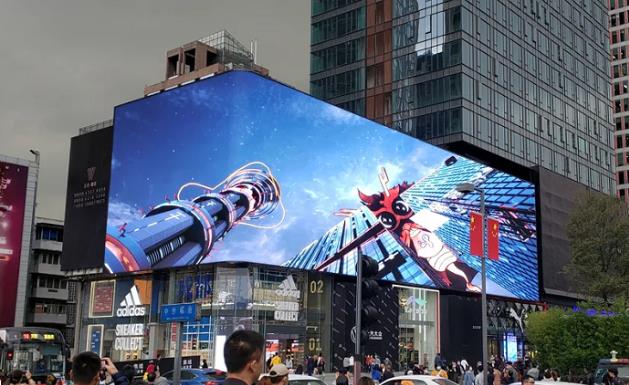As live events, esports broadcasts, and immersive digital spaces evolve, so does the demand for delivering high-quality real-time visuals to large-format LED displays. Traditional AV systems are reaching their limits—especially when it comes to scalability, flexibility, and latency. Enter AV over IP: a transformative technology that is quickly becoming the new standard in LED video wall integration.

This blog explores why AV over IP is gaining traction in LED wall applications, how it works, and what to consider when implementing it for real-world events and installations. Whether you’re an AV integrator, event producer, or system architect, understanding this convergence of IT and AV is crucial for staying competitive.
AV over IP (Audio-Visual over Internet Protocol) refers to the transmission of audio, video, and control signals over standard network infrastructure—typically using Ethernet. Unlike traditional point-to-point systems like HDMI, DVI, or SDI, which require dedicated cabling between sources and displays, AV over IP leverages network switches, routers, and encoders/decoders to distribute signals across a shared data network.
This method introduces several benefits:
Scalability: Easily add or remove sources and displays without re-cabling
Flexibility: Route any signal to any screen in any location
Efficiency: Reduce equipment footprint and cabling complexity
Remote management: Monitor and control from centralized or cloud-based platforms
In large or distributed LED display systems, these benefits are particularly valuable.
LED video walls require synchronized, high-resolution, high-frame-rate video across multiple panels. Traditionally, this required tightly engineered local systems with limited flexibility. AV over IP removes these barriers.
Here’s why it matters:
Low Latency Transmission: Using visually lossless compression techniques like JPEG2000 or SDVoE, AV over IP can deliver real-time 4K (and soon 8K) video with less than 1-frame latency—critical for live camera feeds, sports replays, and interactive content.
Multi-Source, Multi-Zone Control: Want to display a concert stream on one half of the LED wall and social media feeds on the other? AV over IP enables dynamic content zoning with drag-and-drop interfaces.
Simplified Long-Distance Cabling: Fiber or CAT6 cabling can span hundreds of meters without signal degradation—ideal for sprawling event venues or stadiums.
Redundancy and Reliability: Advanced AV over IP systems support failover routes and multicast transmission, improving uptime in mission-critical environments.
Let’s examine how AV over IP powers LED walls in different use cases:
Multi-stage events often require LED walls that can display synced visuals or independent content. AV over IP allows operators to switch feeds instantly, cue visuals remotely, and react in real time to what’s happening on stage.
In film and television, LED walls are replacing green screens. Engines like Unreal render environments in real time, which AV over IP delivers with ultra-low latency. Frame accuracy and color fidelity are crucial—especially for parallax tracking and camera synchronization.
From newsrooms to command centers, operators rely on large LED walls for mission-critical visuals. AV over IP enables fluid switching between inputs (e.g., CCTV feeds, data dashboards, breaking news), all without reconfiguring cables.
Multi-site stores and corporate campuses can manage all LED walls from a central control point. AV over IP enables remote updates, real-time advertising swaps, and interactive content integration with POS or analytics systems.
To maximize AV over IP’s potential for LED video walls, several infrastructure elements must be carefully planned:
Bandwidth Requirements: 4K signals typically need 1–10 Gbps per stream depending on compression. Choose a 10G network switch if running multiple streams concurrently.
Latency Tolerance: Use encoders/decoders that support sub-frame latency. This is critical in camera-based workflows like XR stages.
Multicast Support: Make sure your switch supports IGMP snooping to manage multicast traffic without flooding the network.
Synchronization: For LED walls composed of multiple panels, pixel-level synchronization is essential. Choose an AV over IP platform that supports genlock or clock sync.
Compatibility with LED Hardware: Use high-refresh-rate, wide-color-gamut SMD LEDs (such as those from Kinglight) to ensure visual fidelity. Poor-quality LEDs can bottleneck the benefits of your AV infrastructure.
The rise of AV over IP parallels broader trends in the convergence of IT and AV. As 5G, Wi-Fi 6E, and edge computing become widespread, wireless and hybrid AV over IP deployments will become more common.
Additionally, the integration of AI-driven content adaptation—automatically adjusting brightness, color balance, or layout based on viewer behavior or ambient light—will become standard in smart LED installations.
AV over IP also enables more sustainable AV infrastructure. Instead of duplicating hardware at every endpoint, shared IP-based routing reduces power consumption, waste, and complexity.
The combination of LED video walls and AV over IP opens new creative and operational possibilities for nearly every industry—from entertainment to enterprise. As real-time, high-resolution content becomes the norm, adopting flexible, scalable AV over IP infrastructure ensures you’re ready to deliver content where it matters, when it matters.
By pairing this network-based delivery system with reliable LED components—like Kinglight’s advanced SMD LEDs—you get not only visual brilliance but also system longevity and stability.
Whether you’re building the next virtual production studio or managing an arena-wide LED installation, AV over IP is more than a tech upgrade—it’s a strategic advantage.